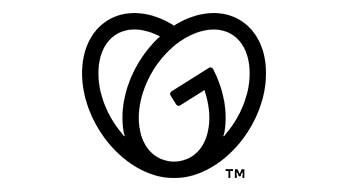
| Starting price | $5.99/mo |
|---|---|
| Pricing model | Per License |
| Free Trial | 30-day |
| Free Version | Yes |
A website is the cornerstone of your online presence, and choosing the best website builder is critical to bringing your vision to life. Whether you’re an entrepreneur, small business owner, blogger, or creative professional, a reliable website builder can help you design and publish a stunning website without any technical expertise.
Find the best value website builder at SaasGenius.
In our curated list, you'll find the best value website builders that we've carefully selected based on extensive research and analysis. Discover our top recommendations and embark on a seamless journey to create a website that combines functionality, esthetics, and usability.

| Starting price | $5.99/mo |
|---|---|
| Pricing model | Per License |
| Free Trial | 30-day |
| Free Version | Yes |

| Starting price | $29/mo |
|---|---|
| Pricing model | Per store |
| Free Trial | 14-day |
| Free Version | No |

| Starting price | $16/mo |
|---|---|
| Pricing model | Tiered |
| Free Trial | 14-day |
| Free Version | No |

| Starting price | $4.50/mo |
|---|---|
| Pricing model | Tiered |
| Free Trial | 14-day |
| Free Version | Yes |
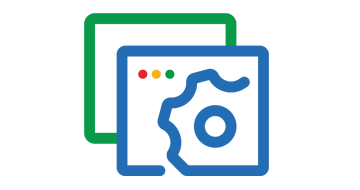
| Starting price | $7/mo |
|---|---|
| Pricing model | Per site |
| Free Trial | 15-day |
| Free Version | Yes |
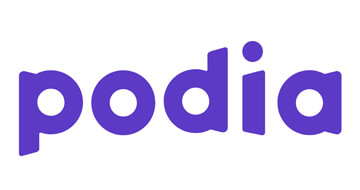
| Starting price | $39/mo |
|---|---|
| Pricing model | Per User |
| Free Trial | 14 day |
| Free Version | No |

| Starting Price | $11.99/mo |
|---|---|
| Pricing Model | Per user bundled |
| Free Trial | No |
| Free Version | No |

| Starting Price | $12 / mo |
|---|---|
| Pricing Model | Subscriber based |
| Free Trial | No |
| Free Version | Yes |
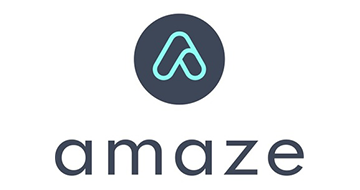
| Starting Price | $6.95/month |
|---|---|
| Pricing Model | Subscriber based |
| Free Trial | No |
| Free Version | Yes |
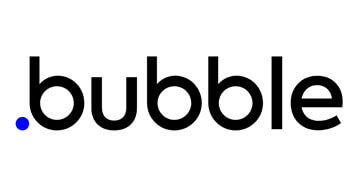
| Starting price | $29/mo |
|---|---|
| Pricing model | Per application |
| Free Trial | No |
| Free Version | Yes |

| Starting price | $5/mo |
|---|---|
| Pricing model | Per site |
| Free Trial | No |
| Free Version | Yes |
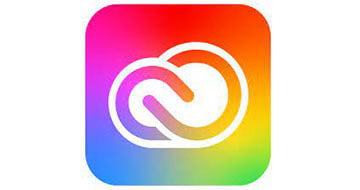
| Starting price | $52.99/mo |
|---|---|
| Pricing model | Per User |
| Free Trial | 30-day |
| Free Version | No |

| Starting price | $12.99/mo |
|---|---|
| Pricing model | Per User |
| Free Trial | No |
| Free Version | Yes (limited features) |

| Starting price | $7/mo |
|---|---|
| Pricing model | Tiered |
| Free Trial | No |
| Free Version | Yes |

| Starting Price | $49/month |
|---|---|
| Pricing Model | Subscriber based |
| Free Trial | Yes |
| Free Version | No |
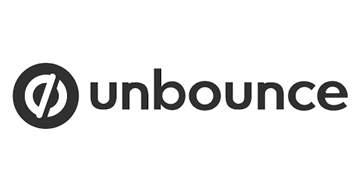
| Starting Price | $90.00 / Month |
|---|---|
| Pricing Model | Subscriber based |
| Free Trial | Yes |
| Free Version | No |

| Starting Price | $99/month |
|---|---|
| Pricing Model | Subscriber based |
| Free Trial | Yes |
| Free Version | No |

| Starting Price | $29/month |
|---|---|
| Pricing Model | Subscriber based |
| Free Trial | No |
| Free Version | No |

| Starting price | $14 .99/mo |
|---|---|
| Pricing model | Pay per Use |
| Free Trial | Yes |
| Free Version | Yes |
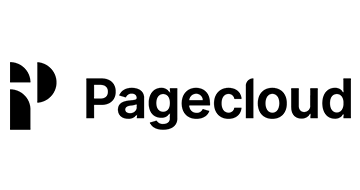
| Starting Price | $19/month |
|---|---|
| Pricing Model | Subscriber based |
| Free Trial | No |
| Free Version | Yes |

| Starting price | Contact for price |
|---|---|
| Pricing model | Subscriber based |
| Free Trial | Yes |
| Free Version | No |

| Starting price | $2.95/mo |
|---|---|
| Pricing model | Per License |
| Free Trial | No |
| Free Version | No |
If you want an internet presence that offers your customers something accessible and easy to navigate, then a website builder is a must. Website builders are content management tools that help you build your entire website with a series of templates and drag and drop features. Rather than having to manually code an entire website, a site builder will actually do this for you through the click of a button.
Of course, each builder’s platform will have a variety of features. For some of them, the emphasis will be on the storage, speed, and bandwidth available to you and your website. Others will focus on templates, website building, attaching and registering your domain, setting up a shop, taking payments, adding a blog, and so on. Because of this, it is important that both small and large companies determine what exactly they need from their website and select the best paid or free website builder for their needs.
There is a wide selection of things that website software can do. For the most part, it helps you set up and design a website very quickly. It can also help with SEO content, the creation of blogs, speeding up the website load time, providing custom content, and a whole lot more. Below you can find some of the main features of a website builder.
SaasGenius applies a rigorous evaluation process to determine the best website builders. We consider factors such as ease of use, design customization, features, customer support and value for money. Our research and analysis provide reliable and unbiased recommendations that guide you to the ideal website builder for your needs and budget. You can trust our rankings to find a website builder that will help you create a visually appealing, functional and successful online presence.
The very best website builder will have a wide array of different features and functions. All of these are in place to make sure that you can create a great website very quickly and easily. And, not only will that website be quick to make, but it will look great and be appealing and accessible to all your clients too. Within the website builder, there are a number of features that will vary across software solutions, but all are in place to ensure a streamlined website creation process. In the following section, we have listed a number of top features found in the best site builder software.
An important feature of website creation software is the ability to provide a massive range of templates for you to use. Some have only a few while other software options have hundreds. By offering a wide range of templates, you can choose one that fits your company or niche very easily. Of course, it is possible to create a website from scratch with these site builders, but it will take longer and these providers are likely not your best option if you want to code your site from scratch. The best website builder for small business and large business ventures will offer both a range of templates and customizable options.
For smaller businesses, in particular, being able to access a free plan is essential. Many of the best free website builder options out there have a wide array of features. Usually, the main difference between a free plan and a paid one is the reduced storage, bandwidth, and speed capability of the site. In some cases, you will find a reduction in the type of premium features you have access to as well.
Top website software will also have comprehensive FAQs and helpful customer support in place. While many of the best website builders are self-explanatory, it can be helpful to get input on the design. And what happens if something doesn’t quite work when trying to integrate an e-commerce tool, add a blog, or add an additional language to the site? Whatever the issue, the site builder should have responsive support to get you back on track.
When you look at the best free website builder, there are a number of things to consider when looking at the benefits available. Because each company and business will have certain requirements, it’s important to look at all the features each software option provides. Larger companies will need more bandwidth, often need more image space, faster load times, and even a more comprehensive e-Commerce platform than a smaller one. In contrast, smaller companies will need to focus on design, and branding in order to promote themselves.
No matter what you need this software for, there are some great benefits to doing so rather than attempting to build a website from scratch or by using code.
A huge benefit to anyone creating a new website is the array of SEO features most site builders will have. The options for this include being able to run keyword checks to see how they rank and being prompted to input SEO keywords. Some builders also have options to add alt text to images to help those show up in searches as well.
For most companies, being able to get in touch with customers in a timely fashion is incredibly important. That’s where live chat comes in. The top software for building a website will offer live chat capabilities that can be added with the click of a button. Of course, you will need someone who can receive these messages.
As a business, it’s likely you will need to be able to get paid for products. Top builders website options will have an array of e-commerce features available. This will allow you to sell products and integrate various payment methods. Above all, you’ll be able to add security and protection to the site within the plan so that payments and customer details are kept safe and secure at all times. Top software will also have email marketing, shipping tools, the option to add promotions, and so on.
The best website builder for small business owners will also make sure that the site being created is mobile-friendly. This means that with the touch of a button, the entire site can be optimized for users on the go. What’s even better is that these sites often have their own apps, so you can build the website from your mobile device as well.
Some of the best free website builder options out there also have the option to include Creative Cloud features too. This is a series of applications from Adobe and is a great way to perform video editing, improve graphics, photography, and a whole lot more. Being able to access this suite within a web builder plan can be hugely beneficial to creating a recognizable and consistent brand.
When it comes to which companies should be using the best website builders for their sites, the answer is everyone. In order to create a great-looking site, it’s always best to get help. Builders website options can really help the creation process thanks to their templates, customizable options, handy help teams, and more. Of course, depending on the business and the type of site, some site builder options will be better than others. Below are a few different companies that should carefully consider which of the best free website builder software options they actually need.
Everyone needs a website so even if you are not selling anything, creating a brand is a must when it comes to building awareness. Website builder software is often available relatively cheaply, which means NGOs are able to create beautiful sites at little to no cost. They are able to add a lot of pictures and images with eye-catching designs to interest people in their cause.
Retailers and companies that are built on a larger scale will also benefit from software such as this. Site builder software can help streamline various processes, keep payments in one place, and make sure the brand is cohesive across all areas of the business. Social media apps can be integrated into the site with statistics being provided so that growth can be monitored.
Single users can often opt for some of the best free website builder options as they won’t need so much bandwidth. However, depending on the type of business or company, it can be worth checking out what features the different options have. Artists may want to look at options with access to Creative Cloud, while those geared toward e-commerce will need to look at strong security and payment options.
Generally, website building software tends to come in tiered plans. The type of plan needed will depend on the size of the company and what they need. However, there are a number of the best website builder options for small business owners that are completely free. Many will offer a basic plan for free, though there are limitations and after some time, most people will eventually upgrade.
For larger companies that need a lot of bandwidth, display large galleries and visuals, and need strong security and a wide array of payment methods, there are often tiers offering more features. For the top-level options, prices tend to be around $56 per month although most will be looking around the $20 mark per month.
The most popular builders website options are the ones that have a range of top-quality features for website design. This means having an array of pre-existing templates, the ability to be customizable, offering fast design capabilities, as well as having high site loading speeds. However, technology and the subsequent needs of websites are always changing. This means that it’s important to stay abreast of the latest trends as this can impact which software you choose. Here are some of the current trends in the best website builder for small business owners.